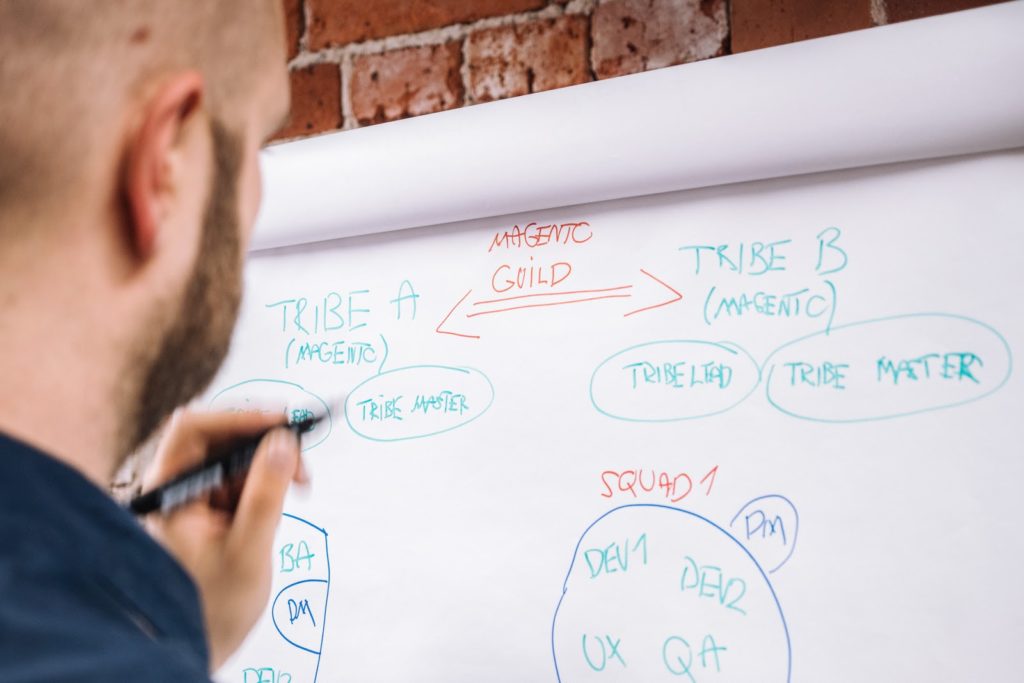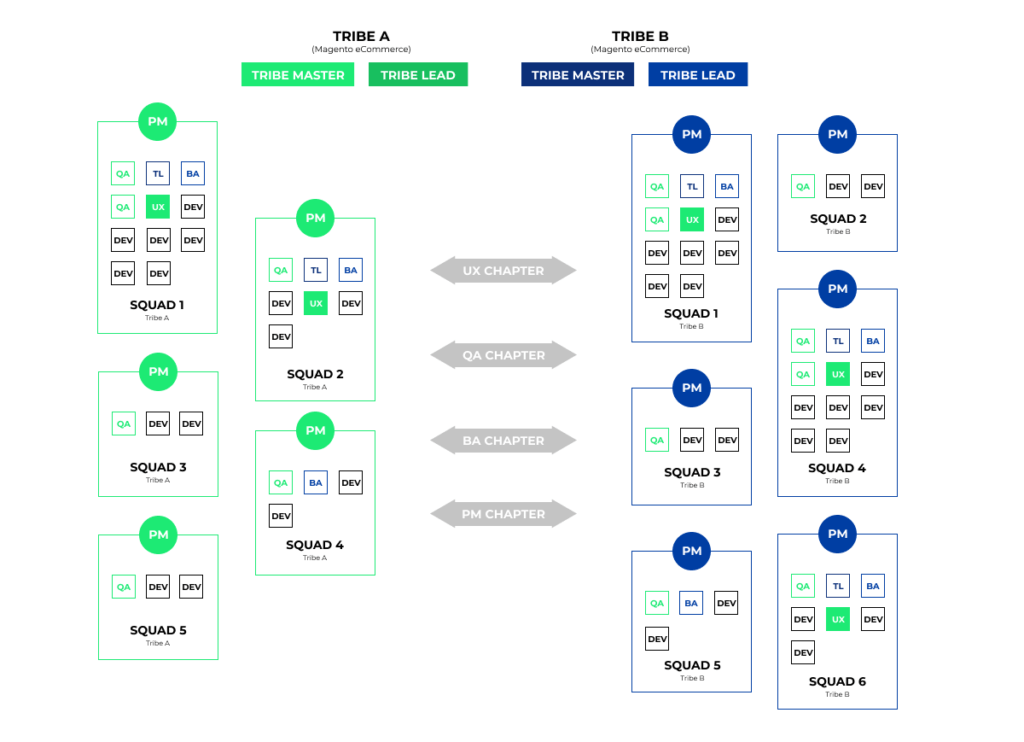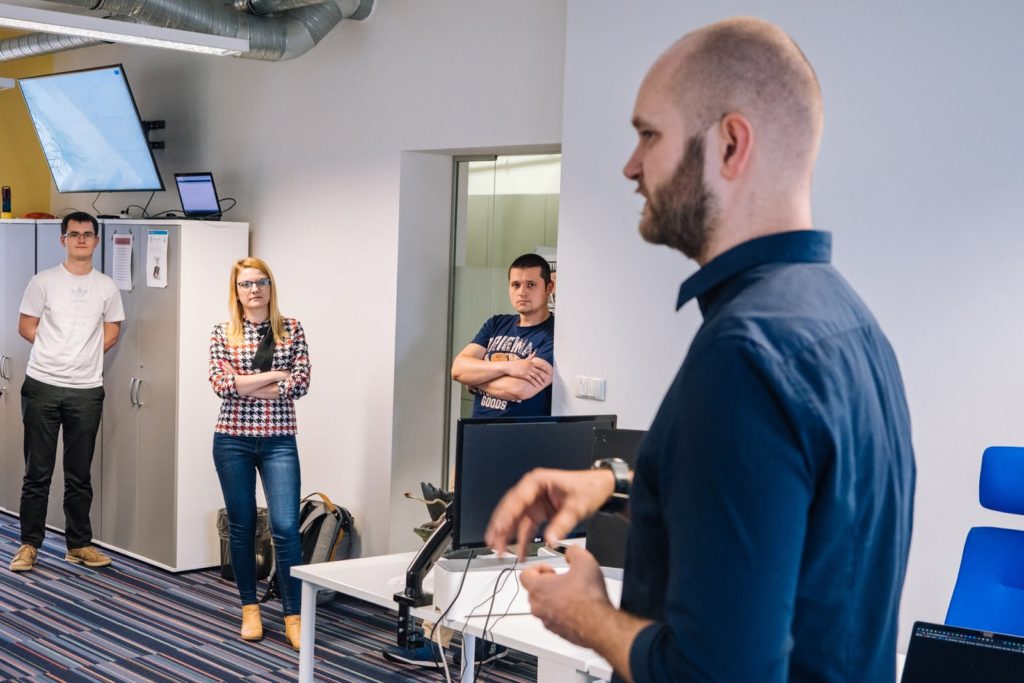How to Draw a Easy Tribesmen Leader How to Draw a Easy Tribesmen
For Divante, Agile is something more than just a buzzword. It's a culture, the way the company works, and grows, without losing its DNA. The key is the Spotify tribes model. The Spotify Tribes Model or the Spotify Agile Model is the way Spotify found to scale agile to a larger organization. It's a setup with autonomous teams. Each team consists of squads and tribes (larger units). There are also chapters and guilds — structures to help knowledge sharing. The whole idea of agile tribes and squads comes from Spotify and it's two influential Spotify Engineering Culture Video's. An agile tribe structure is the sweet spot between making teams very independent while still enabling the sharing of knowledge between people not working together on a daily basis. For almost 3 years now, Divante has been using this agile team structure. Let's see why Divante works with agile tribes and squads. What is their structure? Finally, what are the advantages of tribes for the company? It was 2016 when Tomasz Karwatka, CEO at Divante, faced some issues in the company. Divante had started to grow fast. At that time, the company exceeded about 150 people and he discovered that there were more and more silos. As it later turned out, he needed the help of "The A-Team". — People started saying things like "they did not check, they did not test, it's their fault". These are typical silo problems. Each department dealt with part of our manufacturing process. We didn't have one team that knew exactly what we are doing — said Tomasz Karwatka. — We were looking for a solution. We noticed that a similar problem was solved by Spotify by organizing Tribes. It inspired us. We took a look at this idea. It turned out that this approach, that we have all the competencies needed to create software in one Tribe and not divided into several departments, breaks these silo problems — explains Karwatka. © Krzysztof Basel Divante started with just one test tribe in 2016 — "The A-Team". After a few months, the company analyzed how this system was working. The results were promising. — After a presentation about the benefits of the tribes model in Divante, employees began to report to us saying that they would like to work in tribes. People had seen that it is great to work in such an organization. Further development was a response to the needs of people — said Karwatka. The Spotify Agile Model became popular around 2014/2015. From that time on, some well-known companies like ING have started to change their businesses to suit. Over the past couple of years, ING has reinvented its organization from the ground up. They moved from a traditional organizational model to a completely agile model – a model that shares much in common with the Spotify example. Bart Schlatmann, who was the COO through the transformation, said: "We gave up the traditional hierarchy, formal meetings, overengineering, detailed planning, and excessive "input steering" in exchange for empowered teams, informal networks, and "output steering." You need to look beyond your own industry and allow yourself to make mistakes and learn. The prize will be an organization ready to face any challenge". © Krzysztof Basel The Spotify Agile Model isn't copied 1:1 in Divante. It was modified to meet the company's needs. In Spotify, tribes work on different areas of one product. In Divante, tribes were created mainly on the basis of technology like Magento. — In our tribe, everyone can work in different functional areas and specialize in other aspects or jump between them. The technology is the key. It gives you more options and it's easier to maintain — describes Grzegorz Bandurowski, Tribe Master of the first Tribe in Divante. Are there any more changes to the Spotify agile model in Divante? Let's dig deeper and see how the structure looks. A tribe is a full stack autonomous team in which there are all the different specialists necessary to create a product. There are testers, programmers, Product Design specialists, frontend developers, backend developers, managers, and business analysts. Each of these roles is essential. — My team, which is "The A-Team", currently consists of 25 people. We have been working together for 3 years now. It's like a small startup but tied into a much larger organization, one which has an agile culture and greater operational capabilities— says Grzegorz Bandurowski. Currently, in Divante there are 5 tribes and another two are on the way. © Krzysztof Basel Tribes consist of squads. A squad is the primary dimension, a basic, self-organizing structure within agile tribes. They're focused on product delivery and quality. In Divante one squad consist of 3-11 people. Each squad works on one feature area and it's managed by a Project Manager. There are many loosely coupled, but tightly aligned squads in one tribe. They all are autonomous, like the whole tribe, but play in the same band, and have the same mission as the company. A Tribe Master is like a CEO in a start-up company. He is the real leader and teacher, who does not impose, but leads the team and manages the entire tribe structure. He provides the tribe with a development path. He cares for the development and well-being of employees. Thanks to him, people know what the priorities are, in which direction the tribe and company are heading, and what projects they will work on. The Tribe Master also represents the tribe outside at conferences, but also meeting clients. Tribes have the visible character of their Tribe Masters. A Tribe Leader is the "right hand" of the Tribe Master. A person who is an architect of the solutions and technologies around which Tribe was established (Magento/PimCore/VueJS). He sets the direction of development, determines the manner of implementation of the most important projects, ensures the quality of software, advances the technological development of developers, gives them technical feedback, and helps them to select and maintain quarterly goals according to their level of experience. The Tribe Leader can be considered a CTO of a small software house or start-up. From the company's perspective, the tribe system means that with the rapid growth of the organization, it will not be necessary to create another management line. — Over time, the tribes grow, with one becoming two. Adding another tribe will give us a flat structure. We don't have to build extra management levels. It gives us peace of mind that we will be able to grow for a long time without losing our company's DNA. We will never become a corporation. The tribes model will protect us from this — said Tomasz Karwatka. — Divante currently has about 200 employees. Over time the company could grow to four hundred or even eight hundred people. The employee's perspective in this situation will not change. The employee will still feel as if he is working in a small company, but with even more benefits coming from a large and resilient organization. It is growth in breadth and width, not height. © Krzysztof Basel In a classic structure, the team gets 6 months to implement a new project. It takes at least 2 months for people to get to know each other, then share responsibilities, and familiarize themselves with the project and technologies. During that time, they can become a real, effective team. We omit this whole aspect of discovery with the tribes model. — The same team that worked on one project goes to a new project. These people do not have to get to know each other anymore, because they are friends. They know each other's style of work, they know who is good at what, so they can share tasks. Additionally, in one tribe we have many different specialists from one area of activity. In the tribe, everyone sits next to each other. You can turn around and quickly ask: "Mateusz, I know you had such a problem in the project, please tell me how to solve it" — explains Grzegorz Bandurowski. Directors of a big department are not able to take good care of their group and respond to the needs of each employee. — Before the introduction of tribes, we had specialized departments. The software development department was about 90-100 people. The department had a director and deputy director plus project tech leaders, but it didn't all work as it should. It was difficult to look after such a large group of people, create a sense of attachment to the company and give them substantive feedback – says Natalia Urbańska, HR Director at Divante. Tribes changed everything. — The tribe has made people feel more taken care of and their needs are heard loud and clear. We haven't solved all problems, but employees are now more informed, they are closer to decision making— adds Bandurowski. The Spotify Agile model works in Divante because it is layered on top of the corporate culture, one which values agile processes, autonomy, democratic teams, a good atmosphere, and servant leadership, amongst other things. The agile tribes and squads system gives a lot of benefits – not only to the company but also to the employees. At Divante, the tribes model has helped the company grow and build an agile, modern organization, without losing its DNA and good atmosphere. Of course, not everything is perfect, there are still some issues to solve, like in every company. But the difference, between before tribes and now, is huge. Let us know if you want to taste that difference.Check out available job offers in Divante ➝
What is The Spotify Tribes Model?
"The A-Team" helped to start the Tribes Model in Divante

What is Agile Tribe Structure like in Divante? It's not exactly like in Spotify


Tribes & Squads

Tribe Master
Tribe Leader
Why do we work using the agile structure of tribes? The Advantages of Tribes in Divante
It's a scalable model which helps us to grow and keep our DNA

The Tribes Model helps to be fast, effective and efficient
We can be closer to people
The Wrap-up

Published June 19, 2019

Krzysztof Basel
Experienced Tech & Photography Journalist. Former Editor in Chief of Fotoblogia.pl - the most popular blog about photography in Poland and Deputy Editor in Chief at WP Technologie. Blogger at Spider's Web. Passionate about modern technology, good design, strong coffee and traveling with a small camera.
Source: https://www.divante.com/blog/tribes-model-helps-build-agile-organization-divante
0 Response to "How to Draw a Easy Tribesmen Leader How to Draw a Easy Tribesmen"
Post a Comment